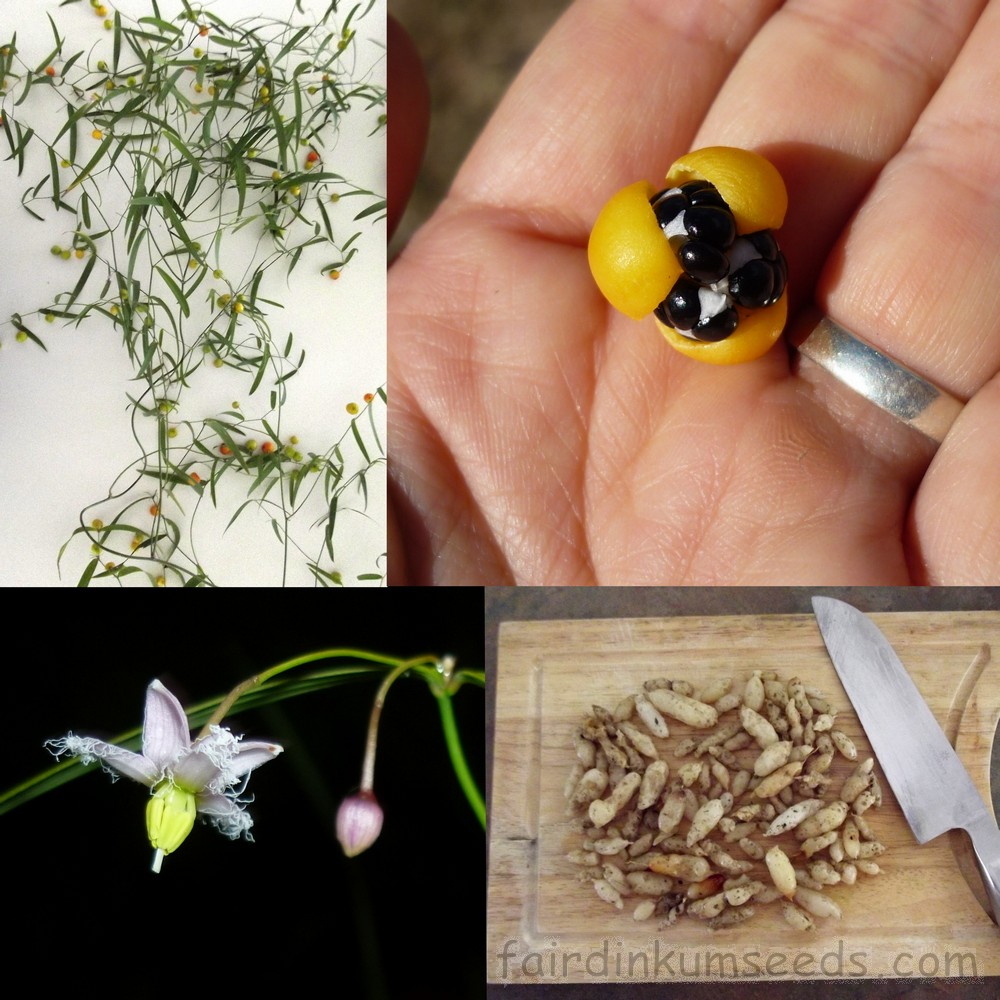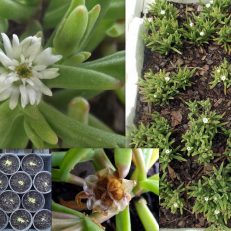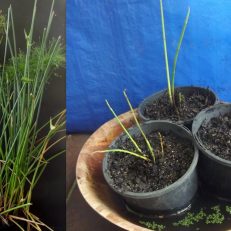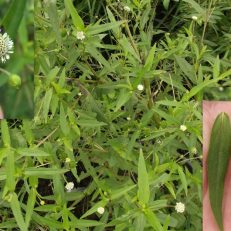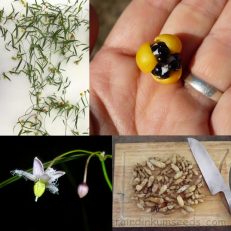Please read text!
Wombat Berry Eustrephus Latifolius Seeds
Packet of 20+fresh seeds, collected from the scrub and the raised beds here at home.
This guy is great, and a native we really should be promoting and growing much more.
It produces a delicious crisp tuber that is great raw or cooked, and a sweet little aril that tastes just like sweet desiccated coconut.
It is common to a lot of areas, and is already growing in most of Australia actually. The thing is no one notices it as the wombats and bandicoots eat the tubers, kangaroos and wallabies eat the shoots, and the birds, especially the parrots eat the flower, berry and seeds.
As the leaf is just a strap it looks like a sort of woody chewed up grassy stuff most of the time, and the hidden bounty of tubers is missed.
The first time I tried growing them seriously I planted 100 seeds in one of our rows down the back in the drier soil and about 2 months later we went down to count them and there were 67 good strong health plants, all about 4inches high.
Those same plants are still there years later, and I dig around the base for a feed every time I get a chance. As long as you leave that central tuber intact you can remove all the other fellas around the edges and the plant with bounce back no dramas at all.
I actually think they actually benefit from a bit of loosening of the surrounding soil. Be sure to give them a water after harvesting them, I reckon they like that too.
As the tubers are spread out around the base just scratching around you can dig a couple up without hurting the mother plant, as long as you work out and away from the central stems.
It isn’t just me, the wombats, and bandicoots love them!
Online tells me that they are edible raw and cooked, but every one I have cooked got a bit tough, and tasted just like a normal spud or yam, which is fine. But raw are awesome, like a juicy apple in texture and kinda sweet too. Real energy booster and worth the effort of digging up unlike a lot of our other native tubers.
Anyway, since then I have tried a whole heap of different ways to grow them.
The best way to grow them for tuber production I have come up with is to plant the seeds in large pots, 3 seeds per pot in this standard soil mix, 5mm deep at the most.
Just water once a week and leave them in a shady spot or in the greenhouse(not a plastic hot house as they will rot if too humid).
Don’t look at them as it does not speed up germination or growth, and don’t bother weeding the pots as it disturbs the small roots of the seeds that are hidden underground.
Weeded pots had a much poorer germination for me. Just have faith and lots of patience, and a couple months later when you wander out to check you should see a whole heap of strong little plants.
From the moment they have their 3rd set of leaves they are super hardy little troupers handling flooding rains or and drought conditions no dramas at all.
Once they are up a strong you can transplant them into the bush for the critters, or garden for yourself. If you want a fast turnover of tubers raised beds are definitely the go and the productivity is amazing.
As long as the soil is sandy and drains well, or if you are on heavy clay be sure to plant them in a mound above the mud, you won’t have any dramas.
If you want seeds for growing another lot, and fruit so you can eat the delicious little arils, I highly recommend you wack a bit of chicken mesh over them as soon as you see flowers.
King Parrots LOVE them and will go to amazing lengths to get at them, chewing straight through standard bird netting, or finding holes many meters away from the plant they intend on raiding, and navigating the nets like a maze, just for a taste of those delicious berries. Kinda frustrating I have to admit, but awe-inspiring all the same. Clever little buggers!
Native to the East coast of Australia, Melanesia, New Guinea and New Caledonia and apparently the 19th century botanist Baron von Mueller said that Wombat berry would be an ideal candidate for selection and improvement for large scale cultivation as a food crop, due to their taste, and hardiness, across a very wide range of climates and soil conditions!
Have to wholeheartedly agree with that one, and really surprised more isn’t being done to that end!
Popular in the UK from specialty growers, from what I can tell looking around online and I have a feeling this fella is gonna be the same as our Aussie macadamia or “Hawaiian Nut”.
Mass produced and popularized by overseas growers, for overseas profits…
Grown here organically by me and the Mrs, no nasties, no chems, no problems!!!
